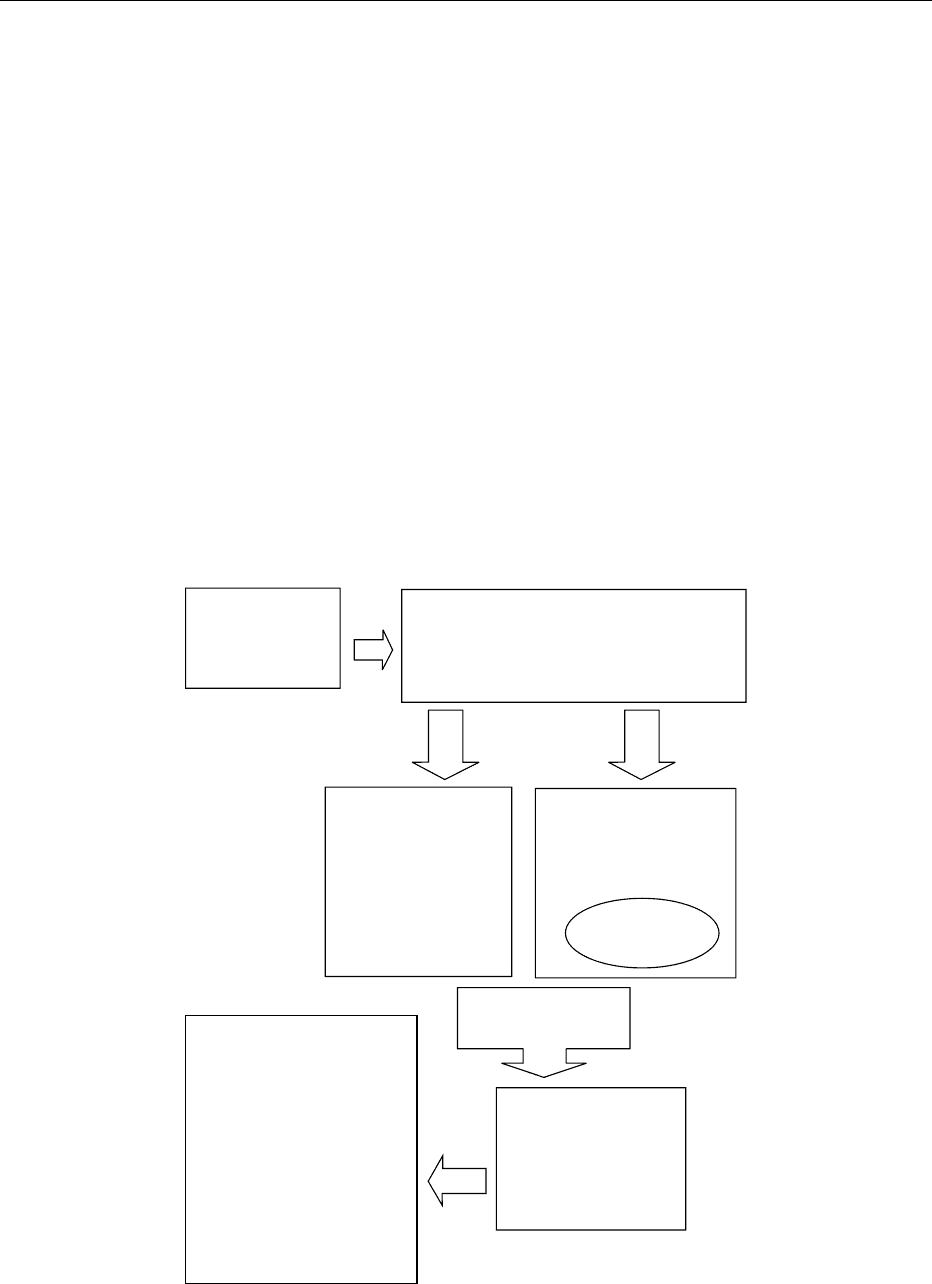Caballero B. (ed.) Encyclopaedia of Food Science, Food Technology and Nutrition. Ten-Volume Set
Подождите немного. Документ загружается.


be encountered in severity and duration. An add-
itional factor is whether there are certain populations
that are more susceptible to the development of a
particular chronic condition. These factors apply in
varying degrees to all of the sequelae listed in Table 3,
but many of the complications either occur very
rarely, or are associated with pathogens that are
themselves rare. Arthritis can be a relatively frequent
complication of foodborne illness and is associated
with some of the more common bacterial pathogens
in food. In addition, arthritic sequelae are one of the
more complex examples in terms of severity, dur-
ation, and susceptible populations. For these reasons,
arthritic sequelae will serve as a paradigm for exam-
ining various economic and clinical considerations
involved in developing cost estimates.
Arthritis Connection to Foodborne Illness
0024 Arthritic sequelae associated with foodborne illness
are organized into three entities: Reactive Arthritis
(ReA), Reiter’s syndrome (RS) and Ankylosing Spon-
dylitis (AS) (Table 4). The incidence of these three
conditions is increased in individuals that possess
the human Class I histocompatability antigen HLA-
B27. This association was one of the first documented
examples of genetic predisposition to disease. The
interest focused on this connection, the mechanisms
involved, and the diseases themselves have resulted in
numerous research and review articles. The genetic
connection and a commonality of symptoms (joint
inflammation) have led experts to group the three
conditions together as ‘HLA-B27-related spondylo-
arthropathies.’
.
0025 ReA is characterized by the inflammation of one
or more joints and generally occurs 1–3 weeks
following acute foodborne illness. Viable organisms
of the causative pathogen cannot be isolated from
the inflamed joints, making it a sterile arthritis, but
there are reports that bacterial antigens or DNA
may be present in inflamed joints.
.
0026 RS is a complicated form of ReA that includes joint
involvement as well as at least one extra-articular
feature such as inflammation of the urethra (pri-
marily in males) and/or uveitis (eye inflammation).
In some cases, no preceding infection can be identi-
fied. Those cases that have an identifiable preced-
ing infection are sometimes called Reactive RS.
Infections leading to RS can be derived from food
(e.g., Salmonella and Yersina) or from sexually
transmitted organisms such as Chlamydia spp. Be-
cause RS associated with foodborne illness is simi-
lar to ReA with respect to articular features and
may only have one extra-articular feature, the term
ReA will be used to capture both entities.
.
0027AS is the most chronic and debilitating of the spon-
dyloarthropathies, characterized by progressive
degeneration of the lumbar spine. AS can take
many years to develop, and in most cases, it is
difficult to make a specific association with a pre-
ceding foodborne infection. The relationship of AS
to foodborne illness derives from its strong link to
HLA-B27, its inclusion in the spondyloarthropa-
thies, and studies of foodborne disease outbreaks
in which patients have been followed for several
(many) years. These studies have provided evidence
that ReA or RS can progress to AS in some individ-
uals and support the theory that the sponsylo-
arthropathies are a spectrum of related diseases.
Clinically, this relationship has been useful in the
early diagnosis of AS, when doing a long-term
follow-up of foodborne outbreaks. Progression to
diagnosed AS is not the only potential chronic out-
come of ReA, which can sometimes lead to recur-
rent or chronic arthritis of joints other than the
spine. The frequency with which these various
scenarios occur has a great bearing on the potential
economic consequences of foodborne illness.
0028Before questions surrounding the development of
long-term arthritic sequelae can be addressed, the
frequency of primary joint inflammation (ReA) after
foodborne illness must be estimated. An assessment
of the circumstances surrounding the initial episode
of illness is also relevant to development of ReA and
long-term sequelae. Most of the available informa-
tion in this area comes from outbreaks of foodborne
illness. However, most outbreak investigations focus
on the acute, gastrointestinal phase of infection,
whereas follow-up surveys to detect arthritic and
other sequelae are rare. There is even less information
tbl0004 Table 4 HLA-B27-associated spondyloarthropathies
Condition Temporalrelationship toinfection HLA-B27 association Prognosis
Reactive arthritis 1–3 weeks after enteric illness 30–80% Usually self-limiting
Reiter’s syndrome Follows enteric or sexually transmitted
infection (1–3 weeks)
60–80% May be self-limiting non-articular
inflammation
Ankylosing spondylitis Difficult to link 90þ% Progressive
2678 FOOD POISONING/Economic Implications

on the occurrence of ReA following sporadic food-
borne illness. (Sporadic cases are foodborne illnesses
that have not been identified as part of an outbreak.)
Clinical information gathered from outbreaks has
suggested that several factors influence the incidence
and severity of ReA. These include the duration or
severity of diarrhea, which is influenced by the viru-
lence of the pathogen and the number of pathogens
ingested. The primary host factors appear to be the
presence of HLA-B27 or other antigenically related
antigens from the HLA-B cross-reactive group of
antigens. With respect to factors that influence pro-
gression from ReA to chronic joint problems, includ-
ing AS, severity of initial joint symptoms, and
presence of HLA-B27 are the most prominent. Recent
studies on AS have also suggested that other host
genetic components related to the production of in-
flammatory mediators such as interferon and tumor
necrosis factor play a role as well. With respect to the
frequency with which primary and chronic joint
problems occur, there is considerable variation in
published reports.
Disease-outcome Tree – Node 1
0029 Our goal was to develop a flow chart or disease-
outcome tree for arthritic sequelae that expressed
the probabilities of various short term and chronic
outcomes based on available clinical literature. This
tree was developed to distribute the cases into differ-
ent categories that are likely to have different average
costs. Several common variables from published
reports of both short- and long-term sequelae were
used to develop the tree. These included the duration
of patient follow-up, the size of the initial outbreak,
response rate to follow-up surveys, the pathogen in-
volved, and bias within the affected population. With
regard to potential bias in the populations under
study, the incidence of HLA-B27 varies among
national and ethnic groups and tends to be higher
among Northern European groups where many
outbreaks have been studied for arthritic sequelae.
Studies from these countries were included, because
to exclude them would have omitted several valuable
reports. When the data were compiled, there was no
obviously higher incidence of Salmonella-associated
ReA among the European versus North American
outbreaks (Table 5).
0030Numerous studies or case reports involving small
numbers of patients were not included, because these
studies provided no basis for determining an initial
incidence of ReA. Most of the information on the
initial incidence of arthritis following infection after
Yersinia enterocolitica, Shigella flexneri, and Cam-
pylobacter jejuni was derived from review articles.
In general, original reports involving the incidence
of ReA following outbreaks of salmonellosis with
various serovars were more frequent and were also
included. These data were incorporated into the first
node of the disease-outcome tree (Figure 2). Only the
four pathogens above were considered, because they
occur with sufficient frequency in the USA to be
captured by FoodNet active surveillance. In Europe,
tbl0005 Table 5 Initial incidence of reactive arthritis following foodborne illness
Source Type (cases) Location Incidence of ReA (%)
Keat (1983) Review Multiple outbreaks 2–3 (2.5)
Maki-Ikola and Granfors (1992) Review Multiple outbreaks 1.2–7.3 (3.5)
Yu and Thomson (1994) Review Outbreaks Multiple 6–10 (8.0)
Simonet (1999) Review Multiple outbreaks 0.5–15 (4.3)
Ike et al. (1986) Outbreak (565) Salmonella – milk US survey 30% response rate 2.3
Inman et al. (1988) Outbreak (260) Salmonella Canada survey 7.3
Thomson et al. (1992) Outbreak (83) Salmonella – luncheon Canada survey 92% response rate 8.2
Locht et al. (1993) Outbreak (126) Salmonella – dinner Sweden survey 90% response rate 15
Samuel et al. (1995) Outbreak (919) Salmonella – restaurant US survey 33% response rate 14
Thomson et al. (1995) Outbreak (423) Salmonella Canada survey 97% response rate 6.4
Mattila et al. (1998) Outbreak (210) Salmonella Finland survey 91% response rate 11.5
Full recovery
Reactive
arthritis
Progressive/
recurrent
arthritis
Full recovery
Acute FBI
92%
(85−97.7)
16%
(18−80)
8%
(2.3−15)
40%
(20−82)
92%
3.2%
1.9%
1.4%
1.4%
100%
Mild or intermittent
joint pain
40% (20−46)
Severe/chronic joint
pain
30% (5.9−48)
30% (14−32)
Sacroiliitis/Spondylitis
Disease Outcome Tree of Arthropathies*
*Following exposure to bacterial foodborne pathogens
fig0002Figure 2 Arthritis–foodborne illness disease outcome tree.
FOOD POISONING/Economic Implications 2679

Yersinia pseudotuberculosis has been associated with
outbreaks of foodborne illness featuring a high inci-
dence of ReA. This organism was not included, be-
cause cases of infection with this pathogen are rare in
the USA, with no confirmed cases from 1996–1999,
based on FoodNet surveillance. The clinical picture of
ReA with all of the four included pathogens appears
to be similar. In looking at a number of outbreaks, the
overall incidence of initial arthritis also appears to
be similar among the above four organisms, but the
incidence of arthritis may vary widely between differ-
ent outbreaks involving the same pathogenic species.
This is probably due to variation in pathogen viru-
lence, dose, host population, or even the effectiveness
of tracking arthritis. For this reason, in developing
the disease-outcome tree, each report or review was
treated as a distinct entity and given equal weight,
rather than pooling cases from different outbreaks.
The reports contributing to the first node of the tree
give a range of 2.3–15% for the initial incidence of
arthritis following foodborne illness. This results in
an average of approximately 8% of foodborne ill-
nesses that result in ReA.
Disease-outcome Tree – Node 2
0031 The second node of the disease-outcome tree distin-
guishes between ReA that resolves completely and
does not recur after the initial episode, and ReA in
which the joint inflammation shows any form of
progression or periodic recurrence. This node is
based on studies that report some progression, or
lack of resolution of joint disease, but do not measure
or define progression to a particular clinical state.
This includes studies with relatively short follow-up
times of less than 1 year. Compared with studies on
the initial incidence of ReA, studies involving
progression or recurrence were fewer and involved
outbreaks of salmonellosis more often than other
pathogens (Table 6). Therefore, most of the data
used for the second node of the disease-outcome tree
were also derived from studies involving Salmonella.
However, our purpose was to quantify, within reason-
able bounds, the possible sequelae of foodborne in-
fection from self-limiting to chronic joint disease. To
focus exclusively on Salmonella would have resulted
in omission of two important long-term follow-up
studies with Shigella and Yersinia enterocolitica.
0032It is conceivable that there is some difference in
the methodology and criteria for detection of ReA
between older studies and more current reports. For
example, a large outbreak of Shigella in 1948 in
Finland reported a very low 0.2% incidence of arth-
ritis, yet, upon follow-up of 100 of these cases 20
years later, 80% had shown some progression with
32% showing signs of AS. The figure of 80% pro-
gression is quite high compared with other studies
and may have resulted from initial recognition of
arthritis in only the most severe cases. These cases
would be the most likely to progress to chronic status.
Other review articles reported the proportion of cases
that progress to chronic status using a qualitative
approach, based on the clinical experience of the
authors. In considering the percentage of cases in
which initial ReA does not completely resolve, or
progresses, the second node of the tree gives a range
of 18–80%. This results in an average of 60% of cases
that do not evidence full recovery.
Disease-outcome Tree – Node 3
0033The third node of the tree measures the progression to
chronic joint disease, based on the data from relevant
studies, making a distinction between AS and other
forms of chronic joint inflammation. Fewer data
points were available for this node. In the various
studies, there was considerable variation in the
number of subjects, the duration of follow-up, and
the clinical criteria and terminology for progression
and for severity. Chronic symptoms were categorized
in these reports on the basis of which joints were
affected, radiological criteria, patient histories, or a
combination of these criteria. If progression was
severe enough to cause radiologically detectable
tbl0006 Table 6 Progression of reactive arthritis
Study Follow-up (cases)
a
Anyprogression (%) Severe/chronic (%)
Sairanen et al. (1969) 20 years (100) 80 32
Leirisalo and Suoranta (1988) 10 years (85) 51.8 5.9
Maki-Ikola and Granfors (1992) >1 year (164) 78 18.3
Thomson et al. (1992) 18 months (6) 33 na
Locht et al. (1993) 6 months (17) 47 na
Yu and Thomson (1994) na (review) 66 33
Thomson et al. (1995) 5 years (27) 66 29.6
Leirisalo et al. (1997) 5–22 years (50) 60 40
Mattila et al. (1998) 4 months (22) 18 na
a
Original number of ReA cases.
2680 FOOD POISONING/Economic Implications

spinal damage, these cases tended to be identified as
sacroiliitis or spondylitis (AS). These cases were dis-
tinguished in a separate category because AS is readily
diagnosed as a distinct entity in the HLA-B27-
associated spondyloathropathies. Two additional cat-
egories were used to capture other types of chronic or
recurrent symptoms. These included cases in which
symptoms manifested as periodic flare-ups, and cases
in which there was chronic joint pain not associated
with the back. Approximately 40% of cases in this
node involve minor or recurrent symptoms. Sixty per
cent of the cases are more severe or chronic joint
inflammation, divided approximately equally be-
tween those that show radiologic evidence of spine
and lower back inflammation and those having
inflammation of other joints.
Conclusions
0034 The disease-outcome tree is a useful tool for eco-
nomic evaluation that establishes estimates for the
likelihood of various arthritic sequelae following an
outbreak of foodborne bacterial illness. The path-
ways are based on reported patterns of clinical dis-
ease. The estimates are necessarily inexact, because of
limitations of the available data. The estimates are
based on incidence data that were all derived from
outbreaks of foodborne illness. It is possible that the
incidence of arthritis following sporadic cases might
be different than the incidence associated with out-
breaks. The use of outbreaks might be biased toward
more virulent pathogen strains. At present, there is no
information on the incidence of ReA following spor-
adic foodborne illness. An active surveillance system
for foodborne illnesses such as FoodNet may prove to
be an excellent mechanism from which to determine
the incidence of ReA in sporadic illness and to con-
duct long-term follow-ups for progressive or chronic
joint disease. As more definitive data become avail-
able, the disease-outcome tree can be updated and
modified.
003 5 The next issue is the economic valuation method
used. The Economic Research Service’s annual food-
borne illness cost estimates use a cost-of-illness ap-
proach for illnesses and a willingness-to-pay (WTP)
approach for premature deaths. CFSAN has routinely
used the value of QALYs lost in its regulatory impact
analyses of food safety regulations. To date, no stand-
ardized method has been chosen by the economic
profession. Ongoing research is developing WTP esti-
mates for morbidity outcomes. In comparison with
cost-of-illness approaches for chronic sequelae, such
as arthritis, both the WTP and QALY estimates can
substantially increase the economic valuation. The
reason is the more comprehensive nature of these
estimates that include an implicit valuation for pain
and suffering, lost leisure time, and other implicit
costs that are not included in the cost of illness esti-
mates based on medical costs, productivity losses,
and other out-of-pocket costs.
0036In the disease-outcome tree developed here, around
8% of the cases of salmonellosis can be expected to
develop reactive arthritis. Forty per cent of the react-
ive athritis cases will fully recover. The remaining
60% can be expected to have recurring episodes of
varying severity (40% mild/intermittent joint pain,
30% severe joint pain, 30% spondylitis). In summary,
the disease-outcome tree encompasses all the possible
lifetime consequences of those in the US population
who have been exposed to foodborne pathogens. The
tree predicts that on average, 92% of acute cases will
have a full recovery; 3.2% will have full recovery
with reactive arthritis symptoms for a few weeks;
1.9% will have lifelong mild, intermittent joint pain;
1.4% will have a lifelong progression to severe joint
pain; and 1.4% of cases will have a lifelong progres-
sion to spondylitis. Valuation of avoiding just the pain
and suffering associated with these arthritic outcomes
can be expected to be significant. An early study by
Thompson suggested that those afflicted would give
up 22% of their household income to be rid of
rheumatoid arthritis. The disease-outcome tree en-
compasses all the possible lifetime consequences of
those in the U.S. population who have been exposed
to foodborne pathogens. The life-long nature and
severity of many chronic sequelae, such as arthritis,
indicate that these will make substantial contribu-
tions to the estimates of the cost of foodborne illness.
See also: Campylobacter: Properties and Occurrence;
Escherichia coli: Food Poisoning; Food Poisoning by
Species other than Escherichia coli; Food Poisoning:
Classification; Tracing Origins and Testing; Statistics;
Listeria: Listeriosis; Salmonella: Properties and
Occurrence; Shigella; Yersinia enterocolitica:
Properties and Occurrence
Further Reading
Council for Agricultural Science and Technology (CAST)
(1994) Foodborne Pathogens: Risk and Consequences,
Task Force Report 122 (cochairs, Foegeding PM and
Roberts T). Ames, IA: CAST.
Economic Research Service (2001) United States Depart-
ment of Agriculture http://www.ers.usda.gov/briefing/
FoodborneDisease/.
Food and Drug Administration (2001) Hazard Analysis and
Critical Control Point (HAACP); Procedures for the
Safe and Sanitary Processing and Importing of Juice;
Final Rule, 66 Federal Register 6138–6202, esp. pp.
6179–6194 (January 19).
FOOD POISONING/Economic Implications 2681

Food and Drug Administration (1999) Preliminary Regula-
tory Impact Analysis and Initial Regulatory Flexibility
Analysis of the Proposed Rule to Require Refrigeration
of Shell Eggs at Retail and Safe Handling Labels, 64
Federal Register, pp. 36516–36539 (July 6).
Food and Drug Administration (1995) Procedures for the
Safe and Sanitary Processing and Importing of Fish and
Fishery Products; Final Rule, 60 Federal Register, pp.
65096–65202, esp. pp. 65179–65192 (December 18).
Locht H, Kihlstrom E and Lindstrom FD (1993) Reactive
arthritis after Salmonella among medical doctors: Study
of an outbreak. Journal of Rheumatology 20: 845–848.
Mattila L, Leirisalo-Repo M, Pelkonen P et al. (1998)
Reactive arthritis following an outbreak of Salmonella
bovismorbificans infection. Journal of Infection 36:
289–295.
Mead PS, Slutsker L, Dietz V et al. (1999) Food related
illness and death in the United States. Emerging Infec-
tious Diseases 5: 607–625.
Sairanen E, Paronen I and Mahonen H (1969) Reiter’s
syndrome: a follow-up study. Acta Medica Scandinavica
185: 57–63.
Samuel MP, Zwillich SH, Thomson TD et al. (1995) Fast
food arthritis – a clinico-pathologic study of post-
Salmonella reactive arthritis. The Journal of Rheumatol-
ogy 22: 1947–1952.
Simonet ML (1999) Enterobacteria in reactive arthritis:
Yersinia, Shigella, and Salmonella. Revue du Rheuma-
tisme (English edition) 66(1, Supplement): 14S–19S.
Thomson GTD, Chiu B, Derubeis D, Falk J and Inman RD
(1992) Immunoepidemiology of post-Salmonella react-
ive arthritis in a cohort of women. Clinical Immunology
and Immunopathology 64: 227–232.
Thomson GTD, DeRubeis DA, Hodge MA, Rajanaygam C
and Inman RD (1995) Post-Salmonella reactive arthritis:
late clinical sequelae in a point source cohort. American
Journal of Medicine 98: 13–21.
Viscusi WK (1993) The value of risks to life and health.
Journal of Economic Literature 31: 1912–1946.
Yu DTY and Thomson GTD (1994) Clinical, epidemi-
ological and pathogenic aspects of reactive arthritis.
Food Microbiology 11: 97–108.
FOOD SAFETY
R Rooney, World Health Organization, Geneva,
Switzerland
P G Wall, Food Safety Authority of Ireland, Dublin,
Ireland
Copyright 2003, Elsevier Science Ltd. All Rights Reserved.
Background
0001 Contaminated food is one of the most widespread
public health problems of the contemporary world
and causes considerable morbidity and mortality.
Globally, millions of people are affected by foodborne
disease. Food poisoning can be very serious in vulner-
able groups such as the elderly, infants, young chil-
dren, pregnant women, and immunocompromised
individuals. The proportion of vulnerable groups
such as the elderly and immunocompromised is
increasing in industrialized countries.
0002 A number of high-profile food-safety emergencies
and scares, in recent years, have shaken consumer
confidence in the production of food and have
focused attention on the way food is produced, pro-
cessed, and marketed. These incidents have included
an epidemic of bovine spongiform encephalitis (BSE)
in cattle, possible links between BSE and variant
Creutzfeldt–Jakob disease (CJD) in humans, and
the discovery of dioxin contaminated animal feed
entering the food chain. New foodborne pathogens
such as Escherichia coli O157:H7, Cyclospora
cayentanensis, and Listeria monocytogenes have
also emerged. Infection with Escherichia coli
O157:H7 can be fatal in young children, the elderly,
and the immunocompromised, and within the last 10
years, serious outbreaks have occurred in the USA,
Scotland, and Japan. Listeria monocytogenes can
result in meningoencephalitis and/or septicemia in
newborns and adults and abortion in pregnant
women. Parasites such as Cyclospora cayentanensis
and Cryptosporidium parvuum have emerged as a
serious health threat for immunocompromised
individuals, particularly AIDS patients.
0003Chemicals in food have also caused concern. Veter-
inary medicines, growth promoters, pesticides, and
other man-made chemicals are widely used in the
food industry. Improper use of these substances in
primary production can result in unsafe residues in
food. Chemicals are also added to foods during pro-
cessing in the form of food additives, flavorings, and
colors. Many consumers are worried about the long-
term impact of mixtures of chemicals and chronic as
well as acute effects on vulnerable groups.
0004Food safety is a sensitive political and economic
issue as well as an important public health issue. This
2682 FOOD SAFETY

paper aims to highlight the factors that have contrib-
uted to food-safety problems over recent decades such
as intensive farming, globalization of the food
industry, and changes in consumer demands. The
biological, chemical, and physical hazards in food
and possible control and prevention strategies for
the industry will be discussed.
Food Safety Hazards
0005 The term contaminant covers harmful substances or
microorganisms that are not intentionally added to
food. Contaminants may enter the food accidentally
during growth, cultivation, or preparation, accumu-
late in food during storage, form in the food through
the interaction of chemical components, or may be
concentrated from the natural components of the
food. There are three main types of hazard: bio-
logical, chemical, and physical.
Biological Hazards
0006 Biological agents of concern to public health include
pathogenic strains of bacteria, viruses, helminthes,
protozoa and algae, and certain toxic products they
may produce. Foodborne infections are caused when
microorganisms are ingested, and these can multiply
in the human body. Intoxications result when micro-
bial or naturally occurring toxins are consumed in
contaminated foods. Microorganisms or toxins may
be introduced directly from infected food animals or
from workers, other foods, or the environment during
the preparation or processing of food. Poisonous sub-
stances may also be produced by the growth of bac-
teria and molds in food. Table 1 lists pathogenic
organisms of public health importance, which may
be transmitted through contaminated food.
Chemical Hazards
0007 Foodborne toxicants can be categorized according to
their chemical nature. Some foodborne toxicants are
inorganic, e.g., lead and arsenic, whereas others are
organic, e.g., saxitoxin and polychlorinated biphe-
nols (PCBs). The main categories of man-made
chemicals that occur in foods are shown in Table 2.
Chemical hazards may result from pollution arising
from industrial and other human activities (e.g., lead,
mercury, cadmium, and PCBs), from agricultural prac-
tice (e.g., pesticides, fertilizers, and residues resulting
from improper use of veterinary drugs in food-produ-
cing animals) or from food processing and packaging
(e.g., nitrosamines and certain polycyclic aromatic
hydrocarbons). These contaminants may present a
potential hazard for human health if exposure
exceeds tolerable levels.
Physical Hazards
0008Physical hazards are foreign matter, including dirt
and glass, that accidentally get into food They can
be the result of environmental contamination during
production, processing, storage, packaging, and trans-
port, or from fraudulent practices. The potential for
tbl0001Table 1 Examples of main biological hazards in foods
Bacteria (spore-forming) Viruses
Clostridium botulinum Hepatitis A and E
Clostridium perfringens Norwalk virus group
Bacillus cereus Rotavirus
Bacteria (nonspore-forming) Protozoa and parasites
Brucella abortis Cryptosporidium parvum
Brucella suis Diphyllabothrium
Campylobacter spp. Entamoeba histolytica
Pathogenic Escherichia coli
(E. coli O157:H7, EHEC, EIEC,
ETEC, EPEC)
Giardia lamblia
Ascaris lumbricoides
Taenia solium
Listeria monocytogenes Taenia saginata
Salmonella spp. (S. typhimurium,
S. enteritidis)
Trichinella spiralis
Shigella (S. dysenteriae)
Staphylococcus aureus
Streptococcus pyogenes
Vibrio cholera
Vibrio parahaemolyticus
Vibrio vulnificus
Yersinia enterocolytica
Source: FAO (1998) Food Quality and Safety Systems. A Training Manual on
Food Hygiene and the Hazard Analysis and Critical Control Point (HACCP)
System. Rome: Food and Agricultural Organization of the United Nations,
with permission.
tbl0002Table 2 Examples of chemical hazard in foods
Industrial/environmental pollution Additives
Polychlorinated biphenyls (PCBs) Feed additives
Agricultural chemicals Veterinary drugs
Pesticides Food additives
Fertilizers Vitamins and minerals
Antibiotics Contaminants
Growth hormones Lubricants
Cleaners
Toxic elements and compounds Pest control chemicals
Coatings
Paints
Inorganic chemicals
Lead
Chemicals migrating
from packaging
Tin Plasticizers
Mercury Vinyl chloride
Zinc Printing/coding inks
Cadmium Adhesives
Arsenic Lead
Cyanide Tin
Source: FAO (1998). Food Quality and Safety Systems. A Training Manual on
Food Hygiene and the Hazard Analysis and Critical Control Point (HACCP)
System. Rome: Food and Agricultural Organization of the United Nations,
with permission.
FOOD SAFETY 2683

ionizing radiation to have long-term health effects,
not only on the people living nearby but also the
health of the ecosystem, is considerable. Following
the nuclear reactor failure at Chernoble (Ukraine) in
1986, food contaminated with radionucleides with
long half-lives, such as cesium 137, is the major
source of exposure for people living in this area.
Table 3 lists examples of physical hazards in food.
Food Safety Emergencies
0009 The ultimate objective of the food industry and gov-
ernment regulators is to insure that food reaching the
consumer is safe and wholesome. Feed manufactur-
ers, farmers, and food operators have the primary
responsibility for food safety. Government regulators
and consumer associations also have a role to play.
However, food-safety emergencies over the last two
decades have exposed weaknesses in the food indus-
try from farm to fork. They have shown that consider-
able progress is needed to come to grips with the
preventive aspects of foodborne disease.
0010 Many factors have contributed to recent food
emergencies. The food production chain is becoming
increasingly complex because of mass production.
Modern farming practices are intensive and can result
in microorganisms contaminating a large number of
crops or infecting a large number of animals. Healthy
animals may carry pathogens that cause disease in
humans. Examples include Salmonella spp., Listeria
spp., and some strains of Escherichia coli and Cam-
pylobacter. Animals may be infected from feed, from
other animals, or from the environment.
Food distribution systems have expanded dramat-
ically over recent decades. This has lengthened the
food chain adding opportunities for contamination
to occur. Ingredients may come from many different
countries and be combined in a single product. The
Food and Agricultural Organization (FAO) of the
United Nations estimates that over 500 million
tonnes of food move in international trade, valued
at around $400–500 billion, each year.
0012Trends show that consumers are relying increas-
ingly on convenience and ready-prepared foods. Such
foods have few barriers to microbial growth, such as
salt and preservatives, and simple mistakes could
easily result in an outbreak of foodborne disease.
World Trade
0013The Food and Agriculture Organization (FAO) and
the World Health Organization (WHO) have comple-
mentary food-safety mandates to protect the health of
consumers, to prevent the spread of disease and to
ensure that the procedures followed in food trade are
fair. The Codex Alimentarious Commission (CAC),
which manages the joint FAO/WHO food-standards
program, sets international standards for food. It was
established in 1961 and 1962 by the FAO and WHO
and aims to protect the health of consumers and
ensure fair practices in food trade.
0014The World Trade Organization (WTO) rules pro-
vide a framework for the application of food-safety
measures in international trade. The standards and
guidelines of the CAC are recognized by the WTO as
the international benchmark standards, guidelines,
and recommendations to be used as the basis of
harmonizing food safety measures affecting human
health and world food trade.
0015International standards influence trade as well as
food safety, and national governments are under
pressure to ensure that their regulatory programs are
comprehensive and conform to these global stand-
ards. Owing to the complexity of the food-
production chain, the traditional role of government
as the food-safety inspector has changed, with the
food industry taking more responsibility for the
implementation of quality-assurance programs
throughout food production, distribution, and retail.
However, a strong national food control agency is
required to bring about cooperation between govern-
ment departments and industry, and to set standards
and targets for health protection.
Risk Analysis
0016The concept of risk analysis is gaining acceptance
internationally as a very important component of
national food control programs, and its principles
are being integrated more fully into the work of
food safety regulators and policy-makers. This prin-
ciple consists of three components: risk assessment,
risk management, and risk communication.
tbl0003 Table 3 Examples of physical hazards
Material Sources
Glass Bottles, jars, light fixtures, utensils, gauge
covers, etc.
Wood Field sources, pallets, boxes, building
materials
Stones Fields, buildings
Metal Machinery, fields, wire
Insulation Building materials
Bone Improper processing
Plastic Packaging, pallets, equipment
Personal effects Employees
Source: FAO (1998) Food Quality and Safety Systems. A Training Manual on
Food Hygiene and the Hazard Analysis and Critical Control Point (HACCP)
System. Rome: Food and Agricultural Organization of the United Nations,
with permission.
2684 FOOD SAFETY

0017 Risk assessment is a science-based investigation
that can provide an estimate of the probability and
impact of adverse health effects attributable to poten-
tially contaminated foods. The aim is to identify, in
some quantitative or comparable way, the relation-
ship between hazards and actual exposure to harm.
The detail and complexity of a given risk assessment
will vary, depending on the availability of time, re-
sources, and scientific information. A full risk assess-
ment may not always be carried out, because data
may be incomplete, and resources may be inadequate.
However, decisions that are made by well-focused
assessments, using whatever data are available, will
usually be more reliable and transparent than subject-
ive judgement. Risk assessment links into the other
two components of risk analysis, the others being risk
management and risk communication. The stages of
the risk analysis process are closely linked and cannot
be separated easily. Consideration of the ways in
which a risk might be managed is necessarily part of
the assessment and communication.
0018Risk assessment consists of four steps: hazard iden-
tification, hazard characterization, exposure assess-
ment, and risk characterization (Figure 1). In hazard
identification, the association between disease and
the presence of a pathogen or contaminant in food
is documented. Hazard characterization involves
obtaining quantitative information about the hazard,
including, where possible, information on dose–
response relationships. Exposure assessment esti-
mates the intake or exposure to a chemical or
pathogen, in terms of its magnitude, duration, and
frequency, for the general population, for subgroups
or for individuals. Risk characterization is the inte-
gration of hazard identification, hazard characteriza-
tion, and human intake/exposure assessment. It
assesses the likelihood of a particular event. This is
the framework adopted by the CAC, the international
standard setting body for foods in international trade.
0019Risk assessment is already fairly well developed for
chemical hazards. The estimation of chemical health
risks often relies on data obtained in the customary
Description of
food safety
problem and
context
Hazard identification
What agents/chemicals are present in the
food and capable of causing adverse effects?
Exposure assessment
What is the likely
frequency and level of
consumption of the
hazard?
Hazard
characterization
What is the nature of
adverse effects?
Dose−response
assessment
Risk
characterization
Integration of exposure
assessment and hazard
characterization.
Risk
estimate
Probability and severity of
illness attributable to the
pathogen/chemical source:
e.g. no of illnesses per year.
Uncertainty: What important
data or knowledge is missing?
Variability: What variable
factors influence the
magnitude of the risk?
fig0001 Figure 1 Steps of food-safety risk assessment. Adapted from Lammerding AM and Fazil A (2000) Hazard identification and exposure
assessment for microbial food safety risk assessment. International Journal of Food Microbiology 58: 147–157, with permission.
FOOD SAFETY 2685

rodent feeding assays using standardized safety
margins. Such assessments call for an extrapolation
of response data derived from animal studies to
humans. The setting of advisory standards, such as
acceptable daily intakes (ADIs) for food additives,
pesticides, and veterinary residues in food, is a key
component in the overall risk assessment of many
chemicals subject to regulatory control. Quantitative
risk assessment is an emerging tool in the field of
microbial food safety. Estimation of microbiological
hazards presented by foods is more complex, because
of biological diversity and variability. However, such
estimations are usually more accurate than estimates
on adverse effects from chemicals in foods. This is
because incidents are frequent, in sharp contrast to
those resulting from exposure to chemicals. This
allows for a better risk assessment.
Risk Management and Risk Communication
0020 Food scares such as salmonellae in eggs, Escherichia
coli O157 in beef and BSE have all damaged consumer
confidence in regulatory agencies. Such problems
were compounded when government departments
had the dual role of promoting farming and the food
industry as well as protecting the consumer. Such roles
resulted in a conflict of interest. A regulatory agency
should ideally be independent of trade and economic
interests and have consumer interests as its primary
function. Although it is the primary responsibility of
the food industry to comply with the laws and regula-
tions, the regulatory agency should provide an inte-
grated inspection system from farm to fork. This may
best be achieved by establishing a national food stand-
ards agency that has responsibility for all sectors of the
food chain. Many countries have established such
agencies and coordinate the work of all government
departments involved in food safety. Such coordin-
ation overcomes the problems of duplication of
work and conflicts of interest.
0021 A foodborne disease surveillance program is also an
essential part of a food control program. Surveillance
is necessary to identify foodborne contaminants, their
sources, and their modes of transmission in order to
determine the best short- and long-term control meas-
ures. Interpretation of trends and investigation of out-
breaks can help identify the mechanisms by which
contamination and disease transmission occurred.
When an outbreak occurs or a chemical contamin-
ation incident is identified, it is vital to learn from
the investigation what went wrong in order to devise
strategies to prevent similar events in the future.
Quality Assurance
0022 Food quality and safety can only be insured through
the application of quality-control systems throughout
the entire food chain. They should be implemented at
farm level with the application of good agricultural
practices and good veterinary practices at production,
good manufacturing practice at processing, and good
hygiene practices at retail and catering levels. One of
the most effective ways for the food sector to protect
public health is to base their food management pro-
grams on Hazard Analysis Critical Control Point
(HACCP).
0023HACCP consists of seven principles that outline
how to establish, implement, and maintain a quality-
assurance plan for a food establishment. It is a system-
atic approach to the control of potential hazards in a
food operation and aims to identify problems before
they occur. Control is proactive, since remedial action
can be taken. The HACCP principles have inter-
national recognition, and the seven principles are
listed in Table 4.
0024HACCP plan adoption has greatly improved the
food industry’s ability to design programs to insure
the safety of food. It was introduced in the early
1970s and has become the premier system for
preventing foodborne hazards, particularly those of
microbiological origin. The basic process in creating
HACCP plans is that the main hazards associated
with a food product are determined, and key steps
in the production, processing, distribution,
marketing, and preparation of food are controlled
tbl0004Table 4 Seven principles of HACCP
Principle 1
Conduct a hazard analysis. Prepare a list of steps in the
process where significant hazards occur and describe the
preventive measures. Assess the likelihood of occurrence of
the hazard(s) and identify the measures for their control.
Principle 2
Identify the Critical Control Points (CCPs) in the process.
Determine the points, procedures or operational steps that can
be controlled to eliminate the hazard(s) or minimize its (their)
likelihood of occurrence.
Principle 3
Establish critical limits for preventative measures
associated with each identified CCP.
Principle 4
Establish CCP monitoring requirements. Establish
procedures from the results of monitoring to adjust the process
and maintain control.
Principle 5
Establish corrective actions to be taken when monitoring
indicates a deviation from an established critical limit.
Principle 6
Establish effective record-keeping procedures that
document the HACCP system.
Principle 7
Establish procedures for verification that the HACCP
system is working correctly.
Source: Mortimore S and Wallace C (1997) HACCP: A Practical Approach.
London: Chapman & Hall, with permission.
2686 FOOD SAFETY

within preestablished limits to insure the safety of
food. A program of monitoring, verification, and
record keeping is then implemented to insure that
the system functions correctly.
0025 The Codex General Principles of Food Hygiene rec-
ommend a HACCP-based approach to enhance food
safety. This management tool is internationally recog-
nized as essential to ensure food safety and is recom-
mended by governments, industry, and consumers.
Conclusion
0026 Food safety in the early twenty-first century is an
international challenge requiring close cooperation
between countries in agreeing standards and in setting
up transnational surveillance systems. The lessons of
the past two decades are plain to those engaged in the
food industry. No longer can farmers grow just what
they want or use technical aids to farming without
taking into account the effect on the quality of the
food produced. Food will always present some risk,
and it is the task of the food industry to keep the level
of risk to the minimum, which is practicable and
technologically feasible. It should be the role of offi-
cial bodies and the food industry to use risk analysis
to determine realistic and achievable risk levels for
foodborne hazards and to base food-safety practices
on the practical application of the results of these
analyses, thus continuously improving the safety of
food and thereby lowering the disease risk. By pro-
viding effective food-control, countries not only pro-
vide public health benefits but enable themselves to
participate in international food trade with greater
confidence.
0027 The lasting solution to the problems, which have
shaken the food industry in recent years, can only be
overcome if all those involved – farmers, food proces-
sors, wholesalers, transporters, retailers, caterers,
scientists, regulators, and government – work to-
gether towards common goals.
See also: Bovine Spongiform Encephalopathy (BSE);
Contamination of Food; Escherichia coli: Occurrence
and Epidemiology of Species other than Escherichia coli;
Food and Agriculture Organization of the United
Nations; Hazard Analysis Critical Control Point;
Legislation: Codex; Listeria: Listeriosis; Quality
Assurance and Quality Control; Risk Assessment;
World Health Organization; World Trade Organization
Further Reading
Aston G and Tiffney J (1997) The Essentials to Food
Hygiene and Safety. Surrey: Eaton Publications.
Benenson AS (1995) Control of Communicable Diseases
Manual, 16th edn. American Public Health Association.
Bhat RV and Moy GG (1997) Monitoring and assessment of
dietary exposure to chemical contaminants. Food safety
and foodborne diseases. World Health Statistics Quar-
terly 50 (1–2): 132–149.
Bryan F (1992) Hazard Analysis Critical Control Point. A
Guide to Identifying Hazards and Assessing Risks Asso-
ciated With Food Preparation and Storage. Geneva:
WHO.
Buchanan RL and Whitling RC (1998) Risk assessment: A
means for linking HACCP plans and public health.
Journal of Food Protection 61(11): 1531–1534.
Chesworth N (1997) Food Hygiene Auditing, 1st edn.
London: Chapman & Hall.
Cliver DO (1990) Foodborne Diseases. London: Academic
Press.
Commission of the European Communities (1999) White
Paper on Food Safety. Com, 719 Final. Brussels.
Dillion M and Griffith C (1996) How to HACCP, 2nd edn.
London: M. D. Associates.
Eley A (1996) Microbial Food Poisoning, 2nd edn. London:
Chapman & Hall.
Falconer L (1999) Risk Assessment and Risk Management.
In: Bassett WH (ed.) Clays Handbook of Environmental
Health. E&FN Spon.
FAO (1998) Food Quality and Safety Systems. A Training
Manual on Food Hygiene and the Hazard Analysis
and Critical Control Point (HACCP) system. Rome:
Food and Agricultural Organization of the United
Nations.
FAO (1999) Report of the Conference on International
Food Trade Beyond 2000: Melbourne, Australia. 11–
15 October 1999. Rome: Food and Agriculture Organ-
ization of the United Nations.
FAO/WHO (1995) Application of Risk Analysis to Food
Standards Issues. Report of the Joint FAO/WHO Expert
Consultation. Geneva: WHO.
Institute of Environmental and Health (1999) Developing
New Approaches to Assessing Risk to Human Health
from Chemicals. Report Prepared by the Risk Assess-
ment and Toxicology Steering Committee.
Institute of Environmental and Health (1999) Risk Assess-
ment Approaches used by the Government for Evalu-
ating Human Health Effects of Chemicals. Report
Prepared for the Risk Assessment and Toxicology
Steering Committee.
Jay JM (1996) Modern Food Microbiology, 5th edn.
London: Chapman & Hall.
Jouve JL (2000) Special issue: ILSI Europe Session on
Microbiological Risk Assessment. International Journal
of Food Microbiology 58: 141–142.
Kaferstein FK, Motarjemi Y and Bettcher DW (1997) Food-
borne disease control: a transnational challenge. Emerg-
ing Infectious Diseases 3(4): 503–510.
Lammerding AM and Fazil A (2000) Hazard identification
and exposure assessment for microbial food safety risk
assessment. International Journal of Food Microbiology
58: 147–157.
Lammerding AM and Paoli GM (1997) Quantitative risk
assessment: an emerging tool for emerging foodborne
pathogens. Emerging Infectious Diseases 3.
FOOD SAFETY 2687
